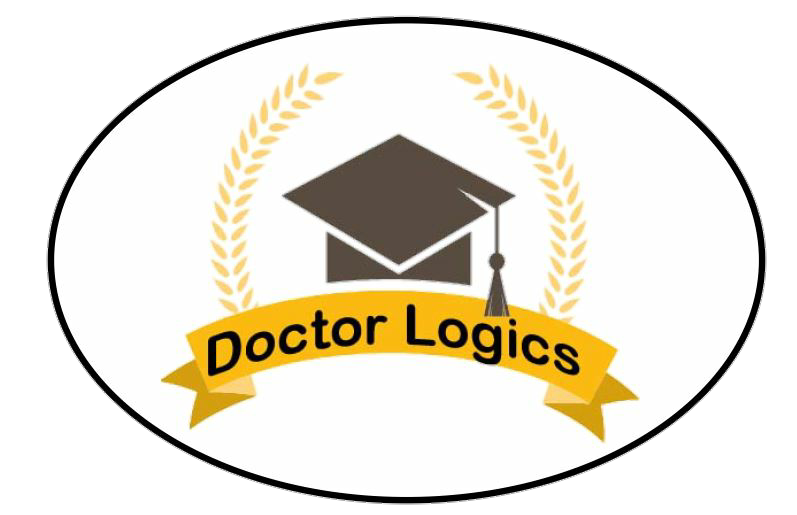ratings
In this course, we will discuss NCERT exercise solutions of our organic chemistry chapter of class 12 (XII), Alkyl and aryl halides also known as halogenated compounds. We will discuss each and every question in detail and I will provide you some super tricks to solve some of these questions.
Unlimited Duration
September 5, 2020
1
EXPIRED
In this course, we will discuss NCERT exercise solutions of our organic chemistry chapter of class 12 (XII), Alkyl and aryl halides also known as halogenated compounds. We will discuss each and every question in detail and I will provide you some super tricks to solve some of these questions.
We will be discussing following questions one by one
10.1 Name the following halides according to IUPAC system and classify them as alkyl, allyl, benzyl (primary, secondary, tertiary), vinyl or aryl halides:
(i) (CH3)2CHCH(Cl)CH3 (ii) CH3CH2CH(CH3)CH(C2H5)Cl
(iii) CH3CH2C(CH3)2CH2I (iv) (CH3)3CCH2CH(Br)C6H5
(v) CH3CH(CH3)CH(Br)CH3 (vi) CH3C(C2H5)2CH2Br
(vii) CH3C(Cl)(C2H5)CH2CH3 (viii) CH3CH=C(Cl)CH2CH(CH3)2
(ix) CH3CH=CHC(Br)(CH3)2 (x) p-ClC6H4CH2CH(CH3)2
(xi) m-ClCH2C6H4CH2C(CH3)3 (xii) o-Br-C6H4CH(CH3)CH2CH3
10.2 Give the IUPAC names of the following compounds:
(i) CH3CH(Cl)CH(Br)CH3 (ii) CHF2CBrClF (iii) ClCH2C≡CCH2Br
(iv) (CCl3)3CCl (v) CH3C(p-ClC6H4)2CH(Br)CH3 (vi) (CH3)3CCH=ClC6H4I-p
10.3 Write the structures of the following organic halogen compounds. (i) 2-Chloro-3-methylpentane (ii) p-Bromochlorobenzene
(iii) 1-Chloro-4-ethylcyclohexane (iv) 2-(2-Chlorophenyl)-1-iodooctane
(v) Perfluorobenzene (vi) 4-tert-Butyl-3-iodoheptane
(vii) 1-Bromo-4-sec-butyl-2-methylbenzene (viii) 1,4-Dibromobut-2-ene
10.4 Which one of the following has the highest dipole moment?
(i) CH2Cl2 (ii) CHCl3 (iii) CCl4
10.5 A hydrocarbon C5H10 does not react with chlorine in dark but gives a single monochloro compound C5H9Cl in bright sunlight. Identify the hydrocarbon.
10.6 Write the isomers of the compound having formula C4H9Br.
10.7 Write the equations for the preparation of 1-iodobutane from
(i) 1-butanol (ii) 1-chlorobutane (iii) but-1-ene.
10.8 What are ambident nucleophiles? Explain with an example.
10.9 Which compound in each of the following pairs will react faster in SN2 reaction
with –OH? (i) CH3Br or CH3I (ii) (CH3)3CCl or CH3Cl
10.10 Predict all the alkenes that would be formed by dehydrohalogenation of the following halides with sodium ethoxide in ethanol and identify the major alkene:
(i) 1-Bromo-1-methylcyclohexane (ii) 2-Chloro-2-methylbutane
(iii) 2,2,3-Trimethyl-3-bromopentane.
10.11 How will you bring about the following conversions?
(i) Ethanol to but-1-yne (ii) Ethane to bromoethene (iii) Propene to
1-nitropropane (iv) Toluene to benzyl alcohol (v) Propene to propyne (vi) Ethanol to ethyl fluoride (vii) Bromomethane to propanone (viii) But-1-ene to but-2-ene (ix) 1-Chlorobutane to n-octane (x) Benzene to biphenyl.
10.12 Explain why
(i) the dipole moment of chlorobenzene is lower than that of cyclohexyl chloride?
(ii) alkyl halides, though polar, are immiscible with water?
(iii) Grignard reagents should be prepared under anhydrous conditions?
10.13 Give the uses of freon 12, DDT, carbon tetrachloride and iodoform.
10.14 Write the structure of the major organic product in each of the following reactions:
(i) CH3CH2CH2Cl + NaI
(ii) (CH3)3CBr + KOH
(iii) CH3CH(Br)CH2CH3 + NaOH
(iv) CH3CH2Br + KCN
(v) C6H5ONa + C2H5Cl
(vi) CH3CH2CH2OH + SOCl2
(vii) CH3CH2CH = CH2 + HBr (viii) CH3CH = C(CH3)2 + HBr
10.15 Write the mechanism of the following reaction:
nBuBr + KCN nBuCN
10.16 Arrange the compounds of each set in order of reactivity towards SN2 displacement:
(i) 2-Bromo-2-methylbutane, 1-Bromopentane, 2-Bromopentane
(ii) 1-Bromo-3-methylbutane, 2-Bromo-2-methylbutane, 3-Bromo-2-methylbutane
(iii) 1-Bromobutane, 1-Bromo-2,2-dimethylpropane, 1-Bromo-2-methylbutane, 1-Bromo-3-methylbutane.
10.17 Out of C6H5CH2Cl and C6H5CHClC6H5, which is more easily hydrolysed by aqueous KOH?
10.18 p-Dichlorobenzene has higher m.p. and solubility than those of o- and m-isomers. Discuss.
10.19 How the following conversions can be carried out?
(i) Propene to propan-1-ol
(ii) Ethanol to but-1-yne
(iii) 1-Bromopropane to 2-bromopropane
(iv) Toluene to benzyl alcohol
(v) Benzene to 4-bromonitrobenzene
(vi) Benzyl alcohol to 2-phenylethanoic acid
(vii) Ethanol to propanenitrile
(viii) Aniline to chlorobenzene
(ix) 2-Chlorobutane to 3, 4-dimethylhexane
(x) 2-Methyl-1-propene to 2-chloro-2-methylpropane
(xi) Ethyl chloride to propanoic acid
(xii) But-1-ene to n-butyliodide
(xiii) 2-Chloropropane to 1-propanol
(xiv) Isopropyl alcohol to iodoform
(xv) Chlorobenzene to p-nitrophenol
(xvi) 2-Bromopropane to 1-bromopropane
(xvii) Chloroethane to butane
(xviii) Benzene to diphenyl
(xix) tert-Butyl bromide to isobutyl bromide
(xx) Aniline to phenylisocyanide
10.20 The treatment of alkyl chlorides with aqueous KOH leads to the formation of alcohols but in the presence of alcoholic KOH, alkenes are major products. Explain.
10.21 Primary alkyl halide C4H9Br (a) reacted with alcoholic KOH to give compound (b).
Compound (b) is reacted with HBr to give (c) which is an isomer of (a). When (a) is reacted with sodium metal it gives compound (d), C8H18 which is different
from the compound formed when n-butyl bromide is reacted with sodium. Give the structural formula of (a) and write the equations for all the reactions.
10.22 What happens when
(i) n-butyl chloride is treated with alcoholic KOH,
(ii) bromobenzene is treated with Mg in the presence of dry ether,
(iii) chlorobenzene is subjected to hydrolysis,
(iv) ethyl chloride is treated with aqueous KOH,
(v) methyl bromide is treated with sodium in the presence of dry ether,
(vi) methyl chloride is treated with KCN?
Studens
About Instructor
More Courses by Insturctor
Course Currilcum
- Questions 1 to 3 FREE 00:00:00
- Questions 4 to 10 FREE 00:00:00
- Question 11 FREE 00:00:00
- Questions 12 to 14 FREE 00:00:00
- Questions 15 to 18 FREE 00:00:00
- Question 19 FREE 00:00:00
- Questions 20 to 22 FREE 00:00:00
Course Reviews
Related Courses
Biomolecules Chemistry Class 12 Term 1 MCQ based
₹999.00Original price was: ₹999.00.₹199.00Current price is: ₹199.00. per 60 days7

